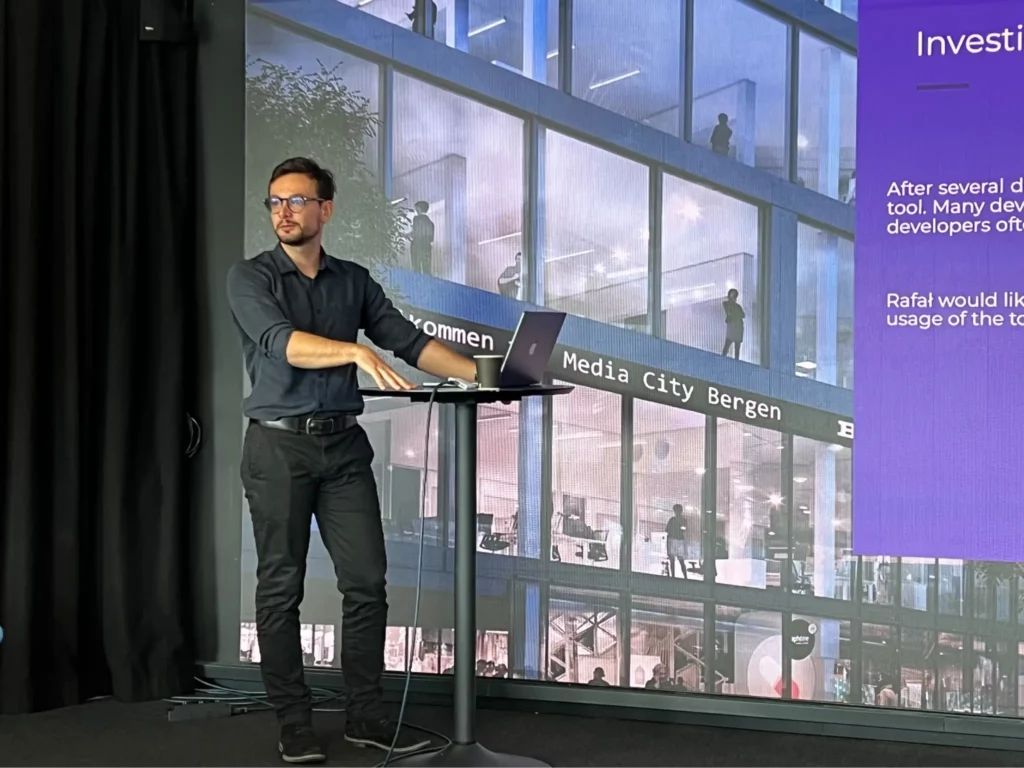COO vs CEO – What’s the difference?
Will your natural gifts and talents make you a better Chief Executive or Chief Operating Officer? Are you more of a tactician or a strategist? Find out which role might suit you best.


Did you know that 9 out of 10 CEOs and COOs love skiing? Well, perhaps not, as I don’t actually have any evidence to support this statement. But I’m fairly sure it’s true though. Just think about it for a moment: no contact with people, slowly carving down a huge mountain just you and the wonderful views. These are the perfect conditions to relax and get away from the daily grind of non-stop meetings, right?
This kind of getaway is surely a must for top executives as the responsibilities they have are… not exactly small. One COO’s duties I came across in particular sound outrageous, but more on that later. Now let’s start out by defining the role of CEO and COO respectively and then take a look at what their daily routine looks like.
Did you know that 9 out of 10 CEOs were previously COOs? In fact, the figure back in 2000 was 76% but a lot has changed since then. What separates those two huge company whales? Let’s take a deep dive into this ocean.
What Does CEO Stand for?
CEO stands for Chief Executive Officer, (although some call it Chief Executive Optimist) and this position is the most important and most responsible role in a company. The ultimate success or failure of the company is squarely on the CEO’s shoulders.

Being good at handling and leading meetings is super important for any CEO. It’s essential to communicate clearly both as a speaker and listener. Don’t forget to share your vision so your team knows where you’re heading. Company meetings are the secret tool that helps calibrate the company’s GPS while also giving it the fuel it needs to move forward.
What Does our CEO Think about his Role and the Role of Meetings?
Grzegorz Iwacz Black Label CEO:
A CEOs role is often shaped by the person holding that role and it varies from company to company. However there is a common saying that a CEO should not work in a company but work on a company. Let me describe it in a different way using my favorite analogy, the captain’s bridge on a ship.
If you’ve seen at least one pirate movie then I bet my gold against your peanuts you already know what a captain’s bridge is. Stepping onto the bridge gives a captain a much better perspective and overview of all the action happening on the deck. It also separates him a bit from all of the complicated day-to-day operations that go into keeping the boat afloat and gives him more space for oversight and strategic thinking.
But that’s not all. Being in a higher position also allows the captain to see the horizon more clearly and therefore helps him to set and stay on course for the treasure island and to better avoid hazards and shallows.
I spend most of my time standing on our metaphorical captain’s bridge. It wasn’t always like this though. Starting a company from scratch, with no funding, had me knee deep in daily operations and it took me some time to dig my way out while the company was growing.
It took a lot of time and effort to let go of all those daily tasks and delegate them to others. Sometimes some courage was necessary too. If you ask me what the key ingredient for running a successful company is, I would say trust – but that’s a topic for another article.
Translating this metaphor from pirate-speak to entrepreneur-glish, working on a company as opposed to working in a company means setting aside certain tasks related to daily operations and making space for oversight and strategic thinking, establishing the company’s vision and guarding its mission and values.
Aligning a company’s actions with a singular vision is no simple task and requires making many difficult decisions, much like keeping a ship on course. Limiting your involvement in day-to-day operational tasks gives you the necessary headspace for better decision making and for better processing. That’s not enough though. High quality output needs high quality input and meetings play an important role here.
A meeting that is well organized and run is a tool like no other for good decision making. I have three rules that are essential for me…
Oh wait there’s someone at the door. It’s Grzegorz our COO – I’ll get back to you about my holy trinity of meeting rules later on in the article.

What Does COO Stand for?
COO stands for Chief Operating Officer, and this position is also one of the most important roles in a company. The COO reports directly to the CEO and they are responsible for turning business strategy into reality. In other words, the CEO plans, the COO executes.
Are you a generalist with extensive experience in the field in which your company operates? Do you have some business administration experience or are you really into business? If any of your answers to these questions are in the affirmative then you should definitely consider becoming a COO. When performing this role you should be a resourceful problem solver and strong leadership skills ought to be second nature to you.
Just like a CEO, you should also be a people person as COOs often work closely with other C-suite executives and other department heads. Organizing and optimizing day to day work for the whole organization? Piece of cake.
What Does Our COO Think About His Role?
Grzegorz Blachliński – Black Label COO:
I consider it to be one of the more ambiguous roles in business. Depending on the company or the industry, the responsibilities related to this role can change and sometimes the role doesn’t even exist at all. In these particular cases, the responsibilities of a COO are usually spread out among the heads of various departments. I might be shooting myself in the foot here, but I don’t believe that this role is actually necessary in every company.
In fact, it all depends on the company. In logistics companies and heavy industry for example, COOs are probably more fully-focused on daily operations, while the role and responsibilities of a COO in the tech industry can blur with that of a CTO.
Moreover, the COO is frequently the person who acts as the right hand to the CEO as they need someone to rely on. I would even venture to say that a COO is often a one-man support department for their CEO. A COO also serves as a quality-assurance filter for a CEO.
In order for a COO to be the right hand to the CEO, the CEO needs to find someone they can trust with absolutely everything. If you don’t have such a person already in the company, it might be smarter not to have a COO and leave their responsibilities to other department heads. Entrusting the wrong person for such an important role could end up pulling the company in the wrong direction.
Strategy, thinking, and planning are the main activities of a COO. This type of job is mostly conceptual work like figuring out how developer teams should work in the company, answering questions like how can the work of certain teams be optimized, how the company’s structure be improved, and how can the company deliver greater value for their clients. Sometimes a COO can be at odds with themself when they analyze new tools, products or supply lines, which are often expensive but at the same may save the time of developers and improve the pace and quality of services delivered.
A COO should hang around the office, sniff around a bit and, when they smell something fishy they’ll know exactly where the problem lies. You can then target the problem at its root cause, and calmly reflect on all possible solutions and outcomes.

The Daily Activities of a COO
This is the type of job in which a combination of working remotely and in the office works perfectly as the job consists of conceptual work and meeting with people. Frankly speaking, I typically use a two block model of work which works wonders for me. You can read more about it later on in the tips section. For now, let me say a bit more about my daily tasks and responsibilities.
First things first I try to tackle all current pressing company affairs. Knowing what’s happening behind the scenes of each team. How is everyone doing and how is everything going? These are the things that the COO must know in order to effectively control the daily operations in a company.
When I’m sure that the daily flow of the company is going smoothly, it’s time to meet with the CEO. To talk about the company’s vision, consult short-term planning and long-term strategy and finally establish a unified position on the company’s development and goals great and small. Then I go off to work on my own, thinking about how to bring our vision to life without breaking things and disrupting processes that already exist and work (this is often quite hard as optimization is usually part of the equation).
Among the many things I work on include: the organization of roles in the company, salary strategies, onboarding processes, technologies we use in our teams, optimizing knowledge flow among employees, not to mention regular growth-technology syncs, contacting and maintaining relations with our main clients, optimizing all processes, creating new teams and responsibilities to fill any gaps, making high-level personnel decisions, singing off on ideas and the optimisation of processes from lower management etc. All of this requires a lot of thinking and planning.
The art of conceptual work is not only about finding a concept but also about finding the right time to implement it. It is extremely important to find the right time as people usually hate changes. In the IT world in particular, we often ask developers to step out of their comfort zones, so I don’t want to add an additional layer of discomfort without a reasonable justification. If a team has just finished a period of heavy lifting with a lot of changes, and is starting to feel stable again, I would rather postpone my crazy ideas of further changes than to change something again and again and again. When I sense the right moment, I form a team, assign them a clear task for improving a process in the company, and then I monitor it.
This is another hard part of a COO’s job – delegating. To be honest, delegation was the word of 2023 for me. I’ll share some more thoughts about this in the tips section later on in the article.
COO vs CEO: Key Differences
COO vs CEO is basically executing vs planning. A CEO is at the top of the chain of command. They strategically plan the future of the company and are an outgoing, outward facing kind of person. The COO is the right hand of the CEO and reports directly to them. Their main job is dealing with the day-to-day operations of the company.
Basically, a CEO is a strategist while the COO is more of a tactician. Strategy and tactics are things you might associate with the military, games or… chess.

In this brilliant board game (which hasn’t received any significant updates regarding piece movement since the 15th century) as a player you should have a strategy for your game and there are dozens to choose from. One of the most popular ones is to build up your position on the field so the opponent can’t sneak past your defenses, wait for your rival’s mistake, and bite back hard.
The other part of the game is tactical. This concept consists of a lot of varied small problems called (in the world of chess) puzzles. To win the game you have to notice all of the mates in one, find a trapped piece or construct a beautiful mating net.
To win the game you have to be outstanding both in strategy and tactics and it is the same for business, with one slight difference. In business you’re not alone. You may find out more about it in our culture corner, where our CEO discusses company culture.
Did you know that the average age for an incoming CEO was 59 in 2022 according to CreditDonkey? Maybe that’s the age when strategic skills are at their peak.
All right, we established that the CEO (as a strategist) plans, while the COO (as a tactician) does. But what are the specifics? What actions should both of them intake in case of a problem? Let’s find out.
Example:
Problem: User base rapidly expands, causing system downtimes and sluggish performance.
CEO: Creates a plan to optimize server infrastructure, and leverage cloud services to ensure seamless performance even during peak usage periods.
COO: Contact the server provider to buy more servers to handle the increased usage. Talk through the problem with the tech department to find a better long-term solution. Meet with the marketing team to understand the cause of the user base peak, discuss the predictions for future site entries to provide well-optimized backend infrastructure to serve users.

COO vs CEO: Tasks They Face
In the table below you can find more general information about the tasks that CEOs and COOs face daily.
| CEO | COO |
| Long-term strategist | Daily operations tactician |
| Formulates company’s vision and its strategy | Implements strategy and vision |
| Outwardly oriented | Inwardly oriented |
| Reports to the board | Reports to CEO |
COO vs CEO: Recommended Skills For Both Roles
What skills are the most essential if you want to become CEO or COO? Here is another table that shows it clearly.
| CEO | COO |
| Creativeness: Being a visionary with dozens of ideas | Being Present-Focused |
| People person: Maintaining and making external relations with board members, investors, partners & media | Great Manager: Great management inside the company |
| Calm but risk-taking decision-maker | Numbers and analytics focused: Making data-driven decisions to optimize performance in the company and resource allocation |
Depending on the size of the company the duties for both CEO and COO might differ. For example a COO might do some activities alone in smaller companies while those tasks will be delegated in larger companies to subordinates such as chiefs of tech or the marketing department.
I want this article to be as practical and helpful as possible. That’s why now we’ll get back to the tips from our CEO and COO to help you understand those roles better and guide you toward getting a C-role position.
Top Tips From CEO and COO
Let’s start with the three huge rules for meetings from Grzegorz, our CEO.
Meetings Tips
- Speak last
First of all, a meeting helps gather together all of the necessary information. That’s why I try to speak last, even if I have a very strong opinion, I think I know the solution or I feel like I’ve made the decision already.
It’s also important for me that everyone is heard and all opinions are taken seriously. This way, all participants are involved in the decision making process and pretty often relate to the decision itself, whatever it is. - Use meetings to have a dialogue with your company
When the decision is made, it needs to be communicated and meetings are handy for that purpose as well. Personally, I like this way best as I can have a dialogue with the audience, answer their questions and doubts and get instant feedback.

- Avoid meetings that could be an email
Meetings are great, but only those that are necessary. I try to avoid going to a meeting as much as I can as they are very time and energy consuming for me. I try to avoid meetings that could be an email.
It happens from time to time that I stand up and say: I hope you don’t mind if I leave unless you feel my presence is beneficial for the meeting.
COO Tips
- Office vs No-office
Office
In the office, I’m busy quickly putting out fires, working with people, getting a sense of what’s happening. I’m a fan of face-to-face conversations. When something needs to be discussed, it’s much better when we have a shared space for it. Often, I don’t have a specific daily plan as people love to grab me when I’m around, but I do have a long-term plan for the week, what meetings are important, what I want to accomplish, etc.
Sometimes, during my time in the office, it’s about simply getting a sense of what’s going on, whether someone feels demotivated, or if someone is having issues with something in the code. These are simple things that allow me to feel the pulse of the company and how individuals are feeling within it. It’s a kind of maintenance, a way of keeping my finger on the pulse.
No-office
It’s important to escape from the office once in a while. I like to sit at home, where I’m alone with myself, I also try not to have meetings then. It’s a space where I carry out more executive work, individual tasks that I must perform myself, focus on and complete them such as analyzing market reports, drawing conclusions from them, thinking if the conclusions are worth showing to everyone in the company or if they require any specific actions and if so when should I execute these decisions.

- Delegating
As I mentioned, “delegating” was my word of the year in 2023. That was the year when I learned how important it actually is.
With all the responsibilities of a COO and trying to be a bit of a project manager and HR rep all at the same time, I simply ran out of time. I was overworked and I didn’t have time for anything else. The solution turned out to be quite simple – delegate.
It increased my efficiency as I got more time working on high-level strategic decisions and overall company management rather than day-to-day tasks. It helped the company a lot in the long-term too.
What’s more, by delegating you’re empowering your employees by giving them autonomy and responsibility. It provides them with opportunities to develop new skills, grow professionally and ultimately discover and interact with more parts of the company.
- Core COO Values: Patience and Trust
Patience and trust – extremely important qualities, especially when you hold a C-level role and you delegate a lot.
Let’s be honest, it’s highly unlikely that someone will do something exactly as you want. And that’s ok. The worst thing you can do is to blame the person who did something differently than you imagined.
You have the vision that you have to convey correctly. You hold all the strings, and also you can look at the problem from every possible angle. It’s harsh, but it’s up to you to specify the task so that it is carried out properly.
FAQ: COO vs CEO
1. What is the main difference between a CEO and a COO?
The CEO sets the company’s vision and long-term strategy, while the COO manages daily operations and ensures that strategy is executed.
2. Who is higher: CEO or COO?
The CEO is the highest-ranking executive and reports to the board. The COO is second-in-command and reports directly to the CEO.
3. Does every company need a COO?
No. Some companies skip the COO role and distribute operational duties across department heads. It depends on the size, structure, and industry of the company.
4. Can a COO become a CEO?
Yes. Many CEOs previously served as COOs, since the role provides deep knowledge of operations and leadership experience.
5. What skills make a good CEO vs COO?
- CEO: Visionary, communicator, risk-taker, people-oriented.
- COO: Problem-solver, process optimizer, detail-focused, strong manager.
6. Which role is right for me?
If you enjoy strategy, vision, and external relations, you might fit the CEO role. If you thrive on organization, execution, and problem-solving, COO could be the better choice.
The Bottom Line
I forgot to ask, but here’s a fun one: Are you a fan of skiing? If so, well, you’re likely a great match for a top executive position.
Remember that if you’re a people person and making new connections sounds like fun, a CEO role might fit you well. On the other hand, when you’re into numbers and like management, you might find yourself better suited to the COO role.
Don’t forget about the rules of meetings from Grzegorz. Speaking last doesn’t sound too hard, and it enables you to gather a lot of information from your people. Avoiding meetings that could be an email also sounds like a great time-saver.
Both of those roles are really demanding, and deciding to pursue one of them is a huge responsibility that you would be taking on your shoulders. Bear that in mind if you decide to take the plunge and start skiing down that particular mountain.




